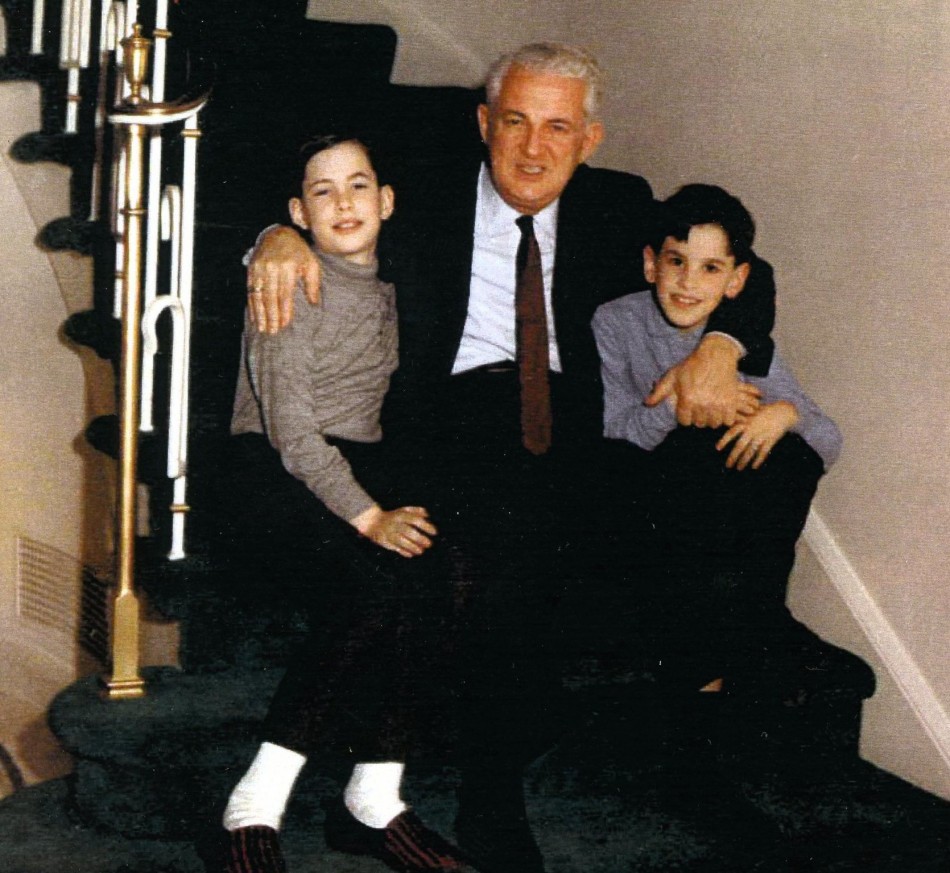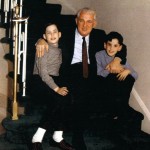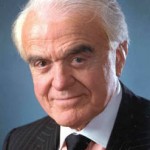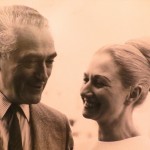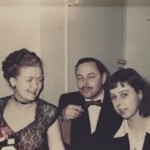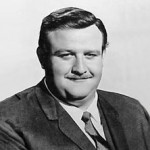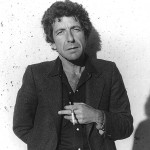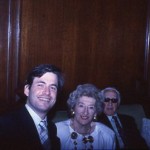by Michael Elihu Colby
Part 13: Who Knew?
It was the best of times, it was the worst of times. In 1968-1970, the Colby family was indeed having a Dickens of a time. My father had reached a point where he could no longer endure the tension of working under Grandpa Ben at the Algonquin. He and Mom were going through something of a separation, while Dad took a job as manager to a hotel in Washington D.C.—to prove he could, literally, manage on his own. Mom, in turn, was extremely upset and sometimes vented her feelings on those still at home. Consequently, I had trouble focusing on schoolwork and was struggling academically.
On the other hand, as through the years, there was the Algonquin, where I could experience novel events and characters and—beyond any MacDonald’s—happy meals. Fortunately, during my father’s absence, my grandparents encouraged my visiting them as much as ever, to make things easier for my mother. In fact, my grandparents sometimes let me get away with all manner of mischief. The Stratford Suite on the third floor was the scene of a typical antic. The Suite was where various critics’ organizations would vote for the “bests” of the year, and I would sneak in afterwards, gathering and perusing the ballots. During my Christmas vacation at the hotel, I’d gather the ballots from the National Society of Film Critics. Come June, I leafed through the votes of the N.Y. Film Critics Circle. I knew the winners of these awards hours before official announcements were circulated. How many teenagers could make that claim?
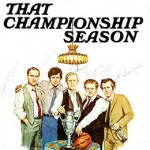

Douglas wanted my advice on whether he should reveal his finding or not, worrying which would be a worse embarrassment: exposing the Critic Circle’s big mistake OR the fact a Bodne grandson had been peeking at the ballots. I replied that truth must prevail—at least in terms of which play was the rightful winner. We couldn’t just stand by and let this egregious error remain. The next morning, he presented the ballots to our Uncle Andrew Anspach, who—as the Algonquin’s manager—reported the discovery to Henry Hewes, critic for The Saturday Review and president of the N.Y. Drama Critics. By the next day a formal media announcement was made that:
Drama critics goof. Henry Hewes…said the ballots which were counted by him and Clive Barnes, critic for the New York Times and vice president of the group, had been inaccurately tallied at the Monday meeting. “We somehow overlooked 10 points for ‘Championship Season’ that were caught when we recounted after the meeting. The group is trying to figure out what to do, because newspaper ads have already run proclaiming the victory of ‘Sticks and Bones.’” One ray of hope for an understanding among everyone involved in the blooper was that both plays were produced by the New York Shakespeare Festival headed by Joseph Papp.1


Not that there wasn’t a certain amount of impropriety involved. But teens will be teens—though not many have experiences like this. And soon after, my brother and I were pushing the limits again when we took a trip with Grandma Mary and Grandpa Ben back to the Beverly Hills Hotel. There, Douglas and I would call the hotel operator to page nutty fictitious names at the celebrity-filled poolside. Some of these concocted names were “Ginger Hollywood,” “Burt Toast,” and “Liza Allyatellmy.” Once, in succession, I even paged the “four questions” from the Passover Seder: “Manny Shtanah,” “Lilah Hahzeh,” “Michael Halaylawt” and so forth. Who knew?
Still, overall, Douglas and I were little gentlemen. Otherwise, Grandma Mary would never have introduced us to the latest Algonquin guests of note. It seemed like there was a new ”guest star” every week shmoozing with Grandma. For instance, there was the playwright Mart Crowley, living at the Algonquin during the run of his off-Broadway smash Boys In the Band, a breakthrough in the gay rights movement. There was Jack Valenti, a close confidant of President Lyndon Johnson, who (from 1966-2004) served as a president himself—of the Motion Picture Association of America. Valenti implemented the film-rating system that “gave new meaning to letters like G, R, and X” 2 while replacing the obsolete Hays Production Code that had banned on-screen nudity, profanity, and other controversial elements. 3 Of course, those are items you can now see every day on TV. But for the moment, the Algonquin was the scene of Valenti’s forging the future of the entertainment industry business, lunching with high and mighty directors and producers.4
Another steady face at the hotel was Mario Puzo, whose new book The Godfather would be released in 1969 and who lunched with his editor William Targ. Targ, an Algonquin reqular and editor-in-chief at G.P. Putnam & Sons, had bought Puzo’s novel—the eventual source of two Academy Award winning “Best Pictures”—for a $5,000 advance after two other publishers rejected it. Published the following year, The Godfather became the most profitable novel ever for Putnam, selling about 21 million copies internationally. 5 It was said that, “Any book that passed through his [Targ’s] hands became as good as it could be.” Mario Puzo called Targ “the Godfather of editors.” 6 Targ was also blessed to be married to the glamorous literary agent, Roslyn Targ, whose luminaries included Samuel Beckett, Erich Maria Remarque, Henry Miller, and Saul Bellow.7 Knowing people like the Targs, I always felt I was shaking the hands that guided literary greatness.
Shaking hands with another Algonquin married pair, Audrey Wood and William Liebling, I always felt I was shaking the hands that guided theatre greatness. This pair ran the Liebling-Wood Agency, with William Liebling representing actors and his wife in charge of playwrights. Liebling promoted the careers of such stars as Marlon Brando, Audrey Hepburn, Elizabeth Taylor, and Natalie Wood. 8 Audrey Wood, perhaps her era’s most revered agent of playwrights, discovered and/or nurtured such playwrights as Tennessee Williams, William Inge (Picnic; Come Back, Little Sheba), Carson McCullers (The Member of the Wedding), Robert Anderson (Tea and Sympathy), and Preston Jones (The Texas Trilogy). Fortuitously, she arranged for many of them to stay at the Algonquin. In fact, it was at the Algonquin (or the “Algon-queen” as he called it 9) that Tennessee Williams first became famous—many years before. This milestone, upon the Broadway opening of The Glass Menagerie, was recounted by reporter Dan Sullivan for the Los Angeles Times:
“It [recognition] had come to him at age 34, after 15 years of bumming the country and literary odd-jobbing. To suddenly wake up in the Algonquin Hotel in New York City and find yourself the most famous young playwright in America was not, somehow, reassuring. Williams remembered later that he had ordered a big meal from room service and by mistake poured chocolate sauce on the steak, spoiling both. … “I feel like I’ve been giving interviews all my life,” he said to a reporter 30 years later in the dining room of that same hotel.” “10
Sad to say, Tennessee Williams and Audrey Wood dissolved their association in 1971, in part because of his drug use, in part when she became a scapegoat for his spate of late-career flops. It was an especially rough period for Audrey Wood. She was still recovering from the loss of her husband Bill in 1969. It was around this period, I’d see this tiny woman—who helped so many artists—sitting silently by herself in the Algonquin lobby. Resembling an antique porcelain doll, she had a striking fragility for such a powerful woman. I,myself, was one of those fortunate to have been helped by her: she was always encouraging and wrote my college recommendation.
Another figure sitting in the lobby around 1968—even more imposing, at least bulk-wise—was character actor Victor Buono. The mammoth Buono was best known for his portrayal of “King Tut” of TV’s Batman; his Oscar-nominated role as Bette Davis’ unctuous suitor in Whatever Happened to Baby Jane?, and his boundless appetite—making him a perfect fit as Alexander Woolcott (the Algonquin Round-Tabler) on a 1971 TV episode It Was a Very Good Year. What he was NOT a perfect fit for, were the chairs at the Algonquin. One day, Buono perched his 6’ 3”, 310 pound frame11 into one of the lobby’s plush armchairs, miscalculating the mass distribution. Suddenly, the lobby was in an uproar as Buono learned he couldn’t extricate himself from the chair and bellmen scurried to find a solution. The hotel engineer had to be called to dismantle the chair piece by piece, thereby excavating King Tut. All I can say is how lucky Buono was that this incident didn’t occur via a bathtub or toilet.
Around this time, a very different sort of icon and Algonquin regular burst on the scene: Canadian singer-poet-songwriter Leonard Cohen. Cohen was a discovery of John H. Hammond, the record producer who was likewise instrumental in the careers of Billie Holiday, Pete Seeger, Bob Dylan, and Bruce Springsteen—to name but a few.12
Cohen’s style is one that might have been embraced by such Algonquin cynics as Dorothy Parker and George S. Kaufman: he has been called the “poet laureate of pessimism,” “the grocer of despair,” “the godfather of gloom” and “the prince of bummers.” 13 His song hits, including “Suzanne” and “Hallelujah,” were popularized by such folk artists as Joni Mitchell, James Taylor, and Judy Collins. Interestingly, in person, Cohen proved a paradox of creative cynicism and personal virtue. For example, as described in Ira B. Nadel’s biography, Cohen was known to be a devoted father and a pious Jew:
A December 11 [1982] entry in a journal describes him in Room 700 of the Algonquin Hotel in New York with a Chassidic prayer book, his father’s tefillin and woolen tallit [prayer shawl], a box of Barton’s Hanukkah candy, and a set of Hanukkah candles, all in preparation for celebrating the festival with his children.14
As further proof of the complexity of this man, in 1996, he became an ordained Rinzai Zen Buddhist monk. What I can say with certainty is that he was extremely kind to me and a great champion of my work on the musical Charlotte Sweet. By pure coincidence, the album of Charlotte Sweet was the only musical theatre recording ever produced by the aforementioned John H. Hammond, Leonard Cohen’s early advocate.
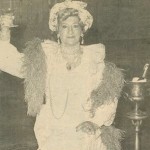

“Her personality was so forceful, her entrepreneurship so adventurous, her successes (and her failures) so epic, that given the demographic changes that have shaped our culture since her day we are not likely to see her likes again.” 15
I and my “Auntie Mame” shared long-distance phone conversations where I would apprise her of the latest shows in New York. In 1982, I flew to Johannesburg, spending a glorious week as the Kushlicks’ guest at their casa. Taubie gave me a grande dame tour of the country, with visits to local theatres, the animal reserves (Taubie had a special fondness for elephants and “ZEH-bras”, as she pronounced them), and the area of Soweto. Visiting Soweto was particularly eye-opening, as I witnessed the primitive living conditions black citizens were finally surmounting. It was comparable to the Reconstructionist South I’d heard about from my family and history books, as South Africa evolved into a land of greater justice and freedom.
Every day with Taubie was an adventure. She set up local interviews we gave together, declaring: “[In regard to when I was a kid:] He once warned me not to attempt ‘A Little Night Music.’ At that age, he showed foresight.”16 Through the week, she regaled me with tales of how—as a woman, a Jew, and a human rights advocate—she had overcome countless hurdles in her career. This visit was a turning point for me. When I returned to the United States, I was inspired to myself co-produce the original showcase production of Charlotte Sweet, and not be weighed down by rejections or setbacks.
The Kushlicks and I became so close, they even flew around the world to attend my wedding in 1986. I was heartbroken when she passed away in 1991. Once asked if she’d ever retire, Taubie answered that she’d given up even pretending that was possible, “How do you write your own death sentence?”17 To the end, she was busy with theatrical endeavors, planning a recording of her extremely popular production of Jacques Brel is Alive and Well and Living in Paris.18
When I was a kid and first met this first lady of South African theatre, I never anticipated this lasting friendship or where it would lead me. Nor did I always realize the import of some guests I saw—though I would learn in time. Cultural and personal tidbits awaited me on every visit to the Algonquin. Much of it would impact my future. But, at the moment, who knew how?
Next part: Moving Days
1 Glover, William. “Drama critics goof: Wrong ‘best play’ announced.” Associated Press / Eugene Register-Guard, Eugene, OR. May 24, 1972.
2 Halbfinger, David M. “Jack Valenti, 85, Confidant of a President and Stars, Dies” in “Movies” section of The New York Times. New York NY. April 27, 2007.
3 Halbfinger, David M. Ibid.
4 Valenti, Jack. This Time, This Place: My Life in War, the White House, and Hollywood. New York: Harmony Books. 2007
5 Calder, John. Obituary: William Targ. The Independent, London UK. August 27, 1999.
6 Calder, John. Ibid.
7 Neyfakh, Leon. “Glamour, Amour: A Grande Dame of Publishing Looks Back” in New York Observer / News. New York NY. February 26, 2008.
8 Audrey Wood: An Inventory of Her Collection at the Harry Ransom Humanities Research Center.” RLIN Record # TXRC01-A0. 1984: The University of Texas at Austin. http://www.lib.utexas.edu/taro/uthrc/00247/hrc-00247.html
9 Barranger, Millie S. Audrey Wood and the Playwrights. New York: Palgrave Macmillan.
January 2013.
10 Sullivan, Dan. “Laughter Important to Late Playwright” in Los Angeles Times / Washington Post News Service (c/o The Victoria Advocate, Victoria TX). February 28, 1983.
11 Coe, Marian. “Victor Buono was a natural for the role” in “Suncoasting, St. Petersburg Times, St. Petersburg FL. March 19, 1977.
12 Prial, Dunstan. The Producer: John Hammond and the Soul of American Music. New York: Farrar, Straus and Giroux, June 2007.
13 de Lisle, Tim. “Hallelujah: 70 Things About Leonard Cohen at 70” in The Guardian, London UK. September 27, 2004.
14 Nadel, Ira B. Various Positions: A Life of Leonard Cohen. Toronto, Canada: Random House.
August 1, 1994.
15 Baneshik, Percie. “Taubie Kushlick” from They Shaped Our Century: The Most Influential South Africans of the Twentieth Century, Cape Town SA: Human and Rousseau, 1999.
16 Baneshik, Percy. “Showbiz: The PERCY BANESHIK column” in The Star, Johannesburg SA. February 24, 1982.
17 Schwartz, Pat. “Travels With Taubie” in Mail and Guardian, Johannesburg SA. 1981.
18 Baneshik, Percy. “Taubie Kushlick” from They Shaped Our Century: The Most Influential South Africans of the Twentieth Century, Cape Town SA: Human and Rousseau, 1999. February 24, 1982.
© 2014, Michael Colby
*No copyright Infringement Intended. For Entertainment Purposes Only.
Click Below for Parts 1 thru 12 :
https://www.theaterpizzazz.com/algonquin-kid-part-way-back/
https://www.theaterpizzazz.com/algonquin-kid-part-2-algonquin-renaissance/
https://www.theaterpizzazz.com/algonquin-kid-part-3-series/
https://www.theaterpizzazz.com/algonquin-kid-part-4-series/
https://www.theaterpizzazz.com/algonquin-kid-part-5-series/
https://www.theaterpizzazz.com/algonquin-kid-part-6-series/
https://www.theaterpizzazz.com/algonquin-kid-part-7-mazel-tov-robert-f-kennedy/
https://www.theaterpizzazz.com/algonquin-kid-continues-part-8-series/
https://www.theaterpizzazz.com/algonquin-kid-part-9-british-staying/
https://www.theaterpizzazz.com/algonquin-kid-musicals-r-us-part-10/
https://www.theaterpizzazz.com/algonquin-kid-learning-ropes-part-11/
https://www.theaterpizzazz.com/algonquin-kid-doesnt-happen-holiday-inn-part-12/


